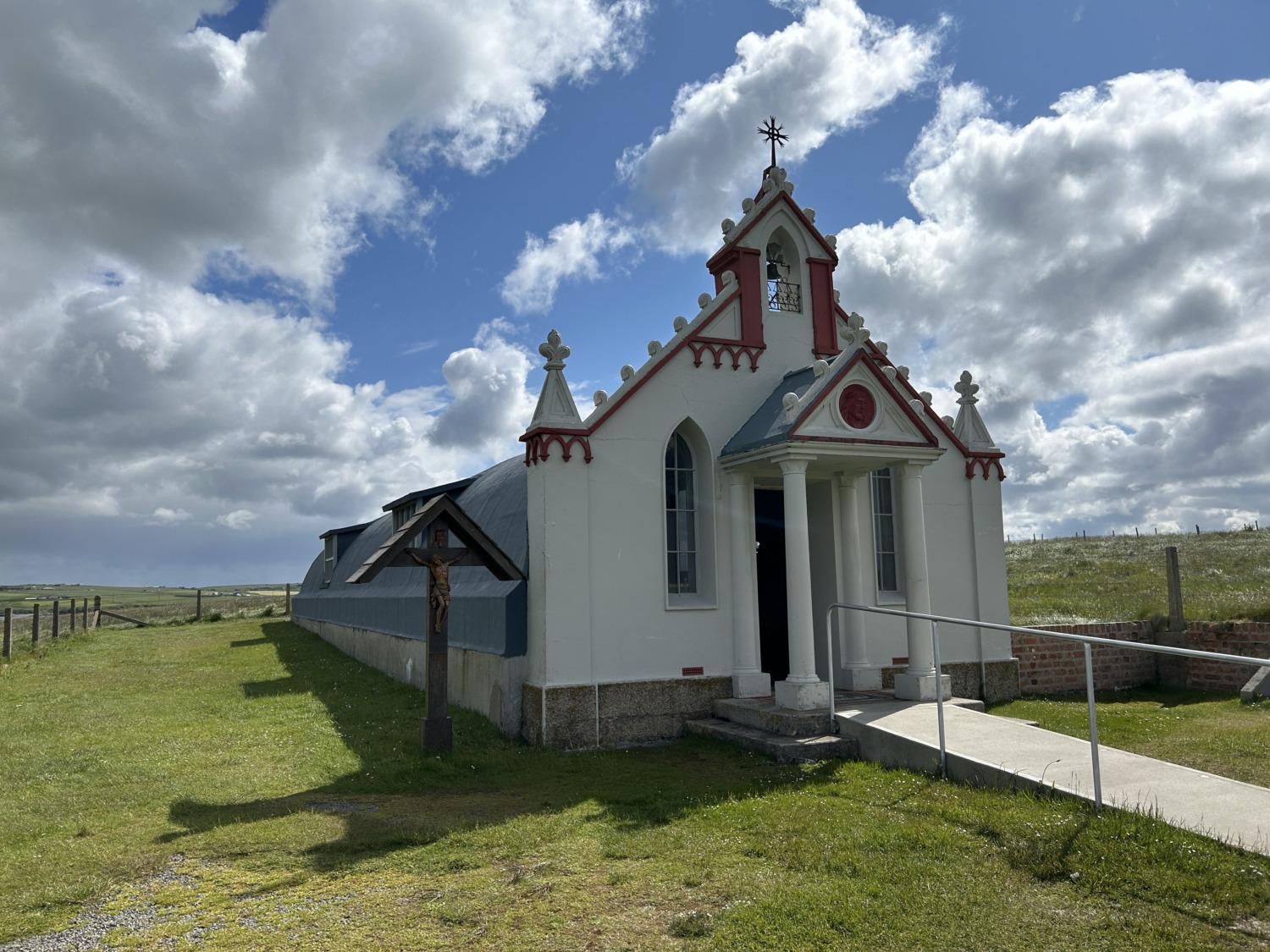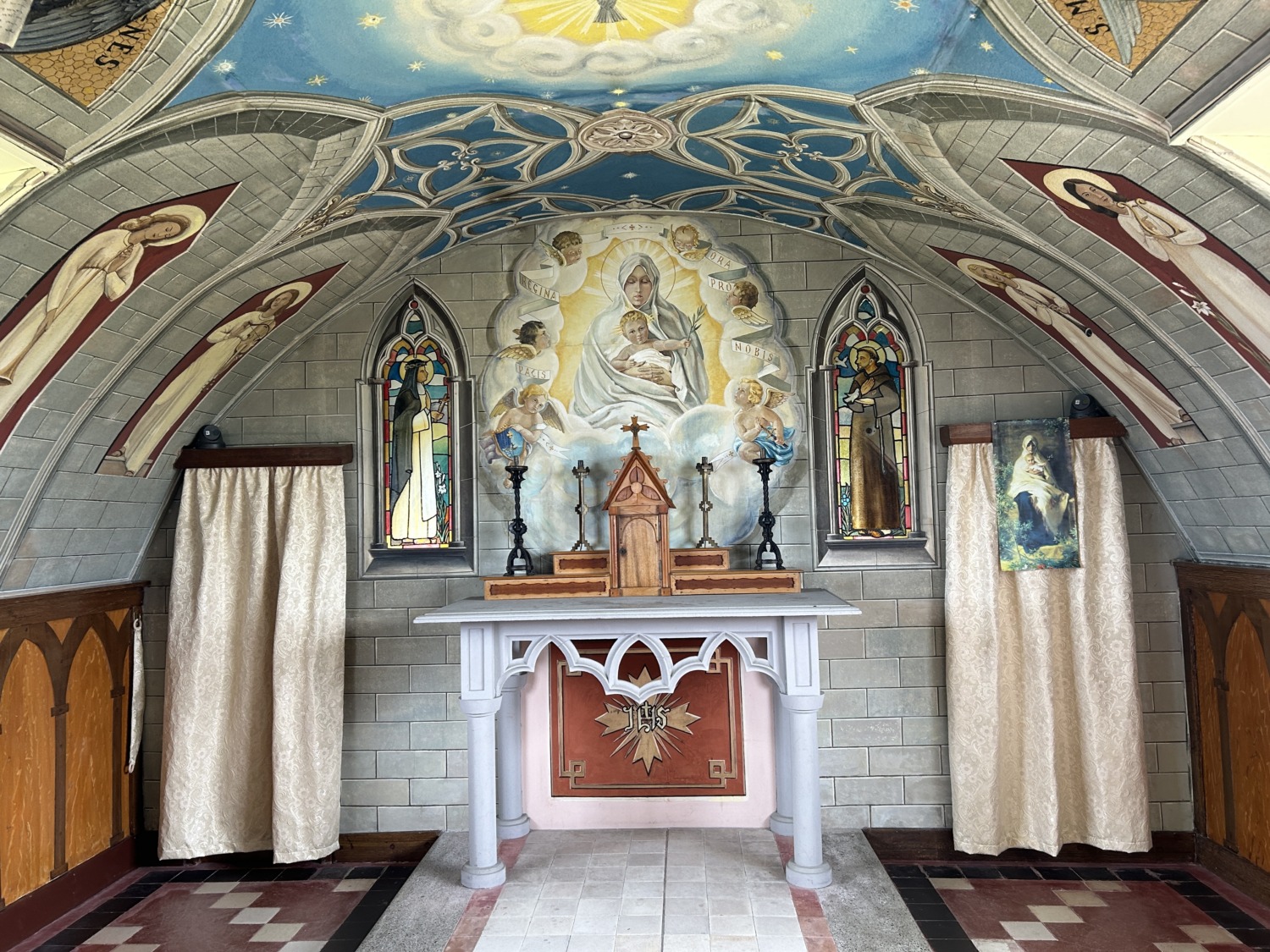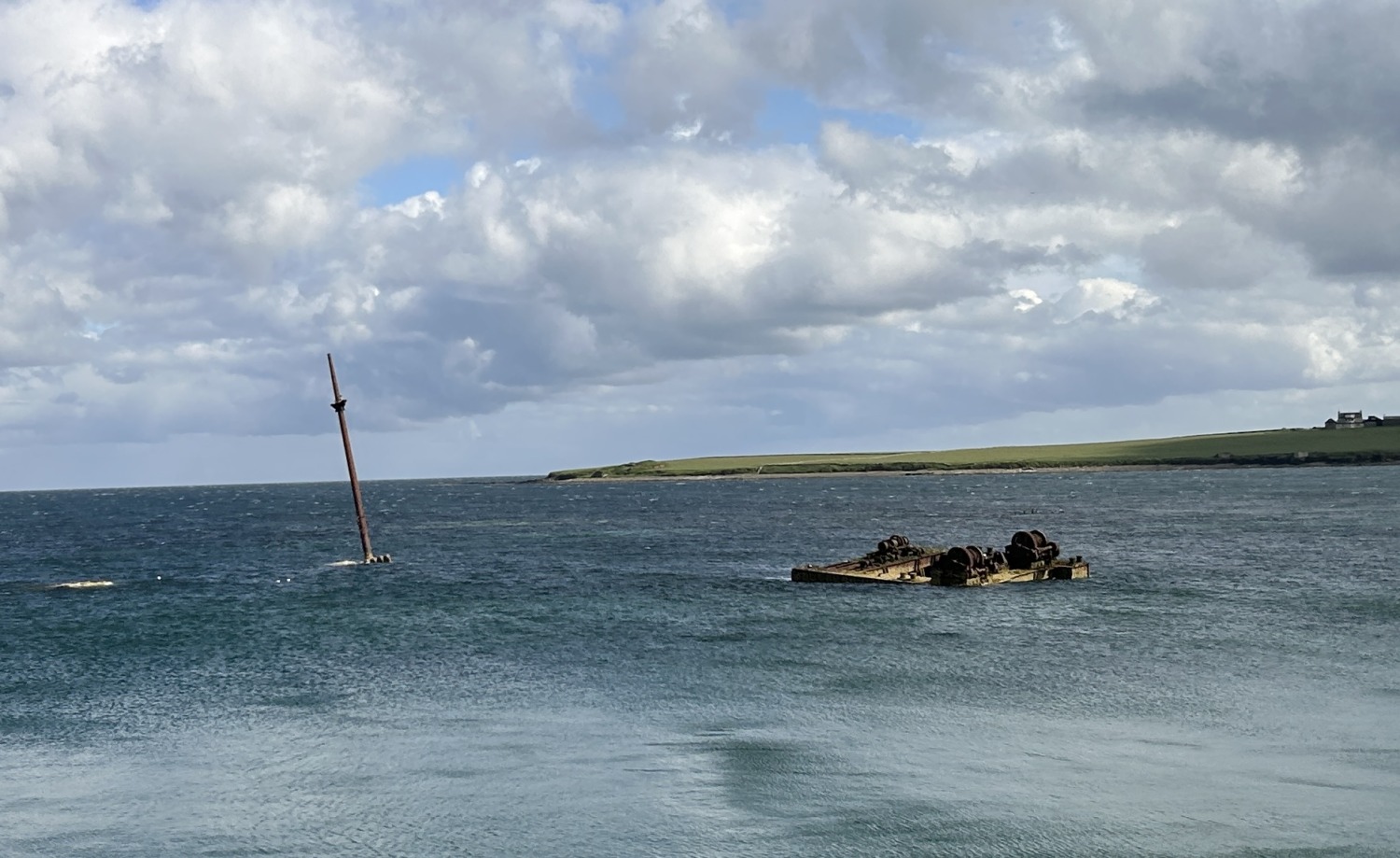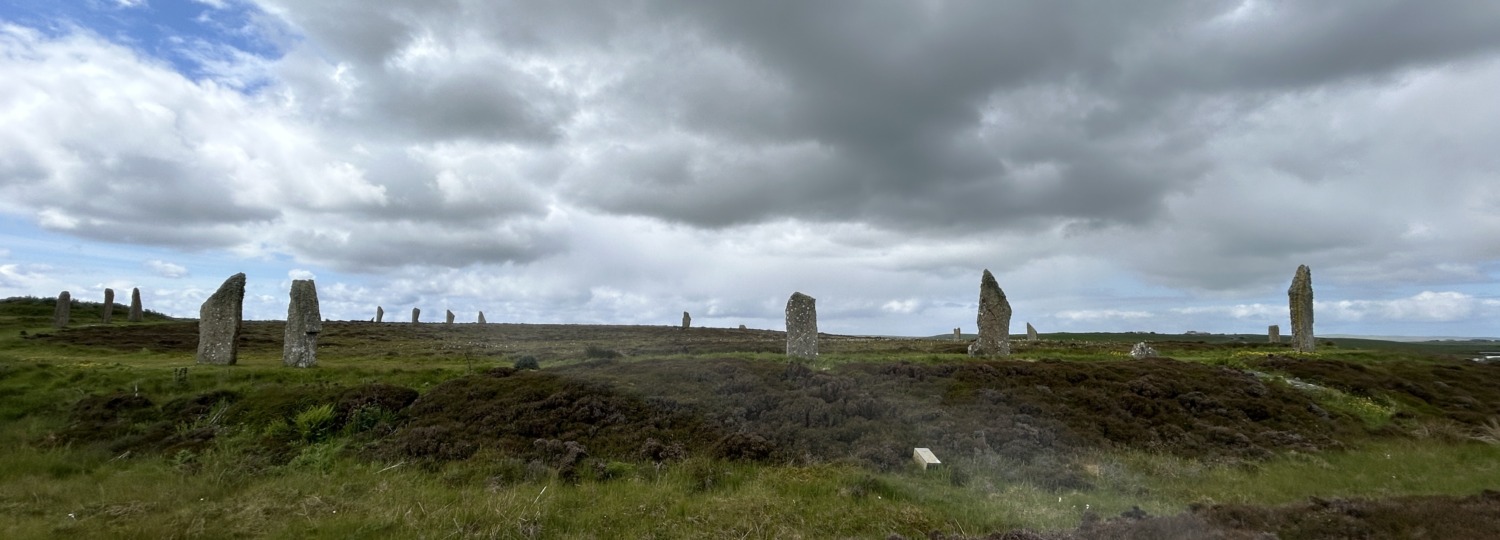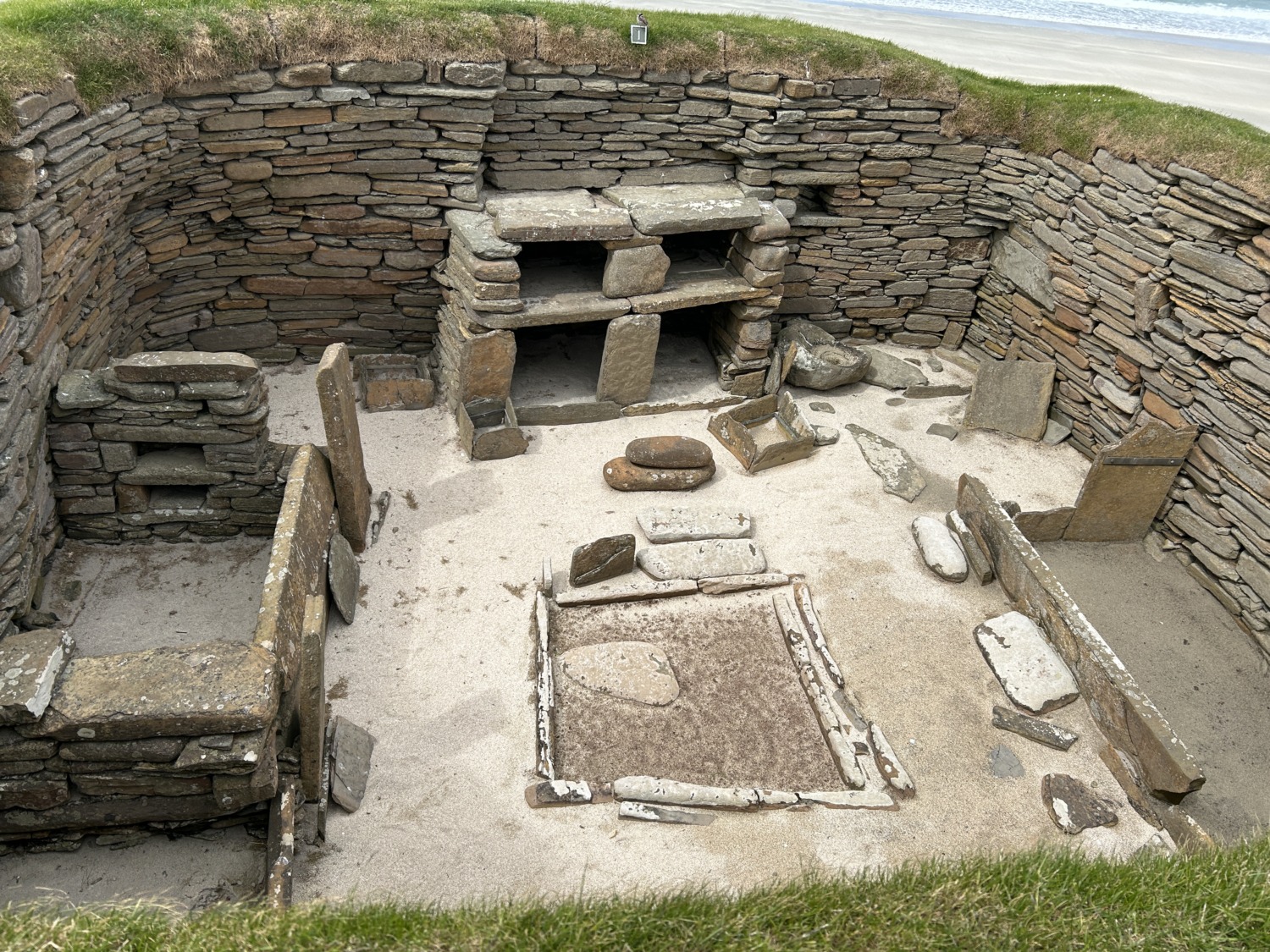Our next destination was a neolithic tour of Orkney Mainland. Tom and I had already been to Orkney on our cruise. Knowing we would be back, Tom and I had stayed in Kirkwall instead of venturing out into the island. This return was our chance to see the Neolithic heritage of the islands.
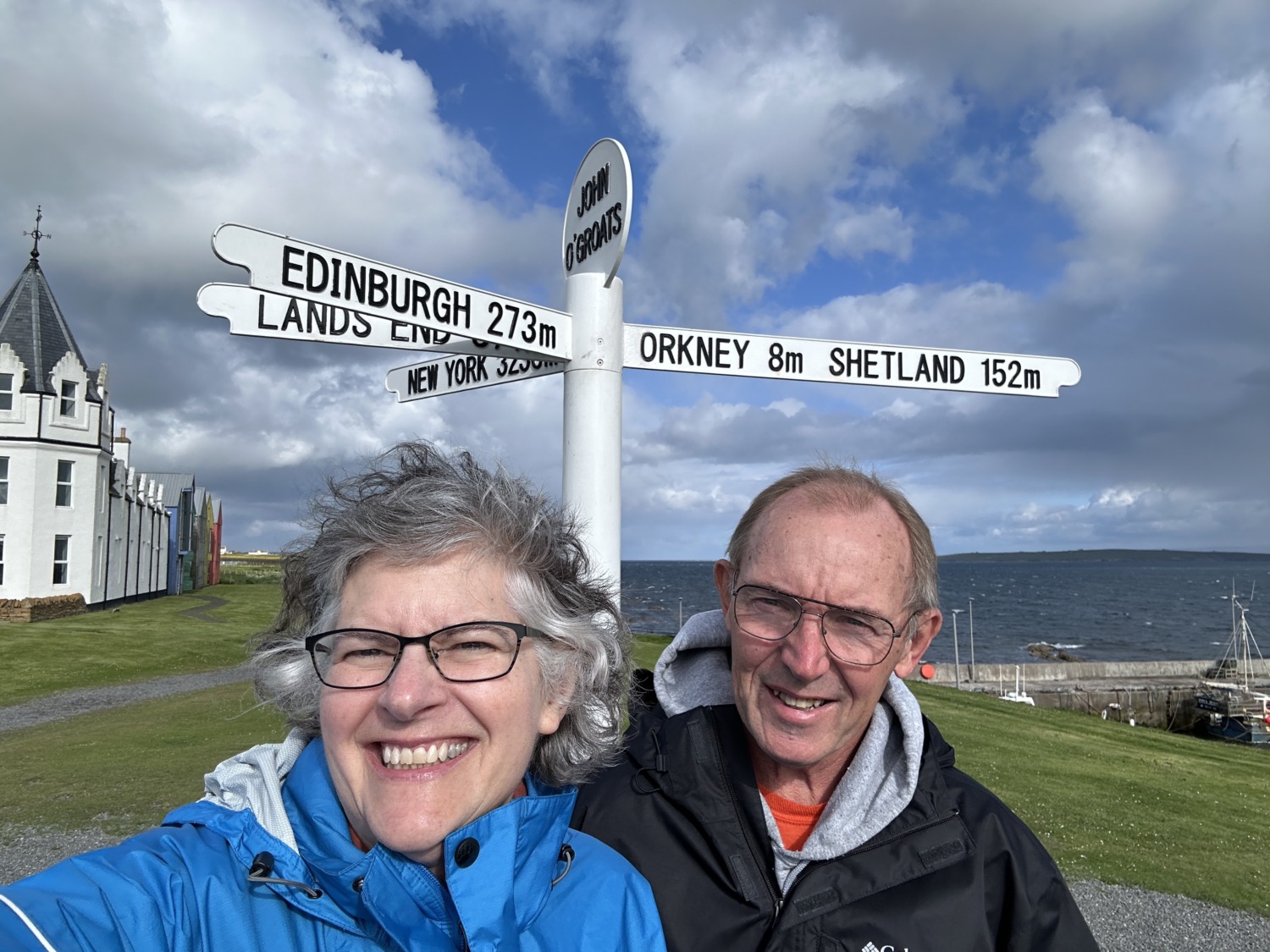
Our bus loaded on the ferry at John O’Groats for the one hour trip. John O’Groats is the northernmost point on the mainland of Great Britain. The ferry trip was a little rocky. Tom and I didn’t mind, but some of the people on our tour were looking a bit green.
After disembarking the ferry, we stopped at the Italian Chapel, which is not at all Neolithic. Instead, it is a Catholic chapel built by Italian prisoners of war who stayed in the Orkney Islands during World War II. It is a beautiful little place built out of scrap materials. The body of the church is two Nissen huts, but the inside is plastered. The walls have masterful trompe l’oeil paintings which makes them look like cathedral stone work. The chapel gave the prisoners a chance to worship and eased their homesickness.
As we drove along the Skapa Flow, Nigel told us about the importance of this body of water to the British navy. Skapa Flow is one of the great natural harbors of the world, with waters surrounded by the larger Orkney Islands. After the German defeat in World War I, their navy was interred in Skapa Flow. As peace negotiations dragged on, the German admiral in charge of the fleet decided to scuttle the fleet rather than let the British have them. 53 German ships were sunk in the harbor. 45 of these ships were salvaged for scrap metal.
Scapa Flow was selected as the base for the British Navy when World War II broke out. On October 14, 1939, under the command of Günther Prien, U-47 penetrated the harbor and torpedoed the British ship Royal Oak. 833 of the ship’s crew died in the attack. Because of this attack, new blockships were sunk, booms and mines were placed over the main entrances, and coast defense and anti-aircraft batteries were installed at crucial points. As we drove along the shore of Skapa Flow, we could see some of the partially submerged ships.
After the Italian Chapel, we had an hour in Kirkwall for lunch and sightseeing. Most people went to the Cathedral. Tom and I had seen everything interesting in Kirkwall when we were there before. We had also checked out the shops. We headed straight pick up some meat rolls and doughnuts at the bakery. After eating them in some light rain, we continued Tom’s search for the perfect Scottish sweatshirt. Kirkwall doesn’t have a load of souvenir shops and we didn’t find one.
We still had some time, so we stopped at an ice cream shop and I got a scoop of ice cream. They had an odd choice of flavors. I got toffee fudge which I expected to be toffee ice cream with chunks of chocolate fudge. Instead it was toffee ice cream with pieces of toffee fudge. Still delicious. We ate it inside because it was raining again. Then we headed back to the bus.
Our first Neolithic site was the Ring of Brodgar. It was very impressive. The Ring of Brodgar is a Neolithic stone circle. It is the only major henge in Britain which is an almost perfect circle. Most henges do not contain stone circles; Brodgar is a striking exception, ranking with Avebury and Stonehenge among the greatest of such sites. Originally there were 60 stones but only 27 remain. We walked all around it and I took pictures from every angle. It was about 45 degrees with the wind was close to 30 mph so we didn’t linger. Hurrying back to the bus became even more important when sideways rain started.
By the time we arrived at Skara Brae, the rain had stopped – temporarily. Skara Brae is a Neolithic village along the coast that was not discovered until 1850. The site is the best-preserved group of prehistoric houses in all of Western Europe. We watched the short video and then walked through a small museum. There was a reconstructed round house which was very well built and interpreted.
Then we walked to the village of Skara Brae. We walked along a timeline that had stones that marked different events in history. Once we reached the birth of Jesus, we walked a relatively long while before we came to the village which is dated about 5,000 BCE. Much of the village has been excavated. We could look down into the houses and see the workshop. The houses looked fairly comfortable for the period. They would have been well insulated, set into the ground with rounded earthen ceilings. It was very interesting. Ring of Brodgar and Skara Brae are both on the UNESCO World Heritage site list.
It started to rain again so Tom and I headed back to the bus. The rain continued as we drove past an ancient burial mound and some solitary standing stones. The rain stopped briefly in time for us to get out at the Standing Stones of Stenness. Only four of the original eleven stones are still standing, but they were impressive. The farmer who owned the land in 1814, started to destroy the stones, but there was such an outcry that he stopped and it became a protected site.
Our group did such a good job at getting back on the bus (because of the wind, rain and cold) that we were now 30 minutes ahead of schedule. Nigel reckoned that there was just enough time for him to buy the group a scoop of ice cream. He asked if we were too cold for a scoop of ice cream. Of course we all said no! So back we went to the same shop where I got my ice cream earlier. Two scoops in one day! This time I got Mint Chocolate Chip, which was just as good as the toffee fudge. Tom got vanilla.
We pulled into the ferry dock at just the right time to get back on the ferry and return to Wick, where we spent the previous night. It was so nice not to pack up our suitcases for a night. We had a great day visiting the Neolithic sites on Orkney but were pleased to be in a place that was dry and warm for the night.

